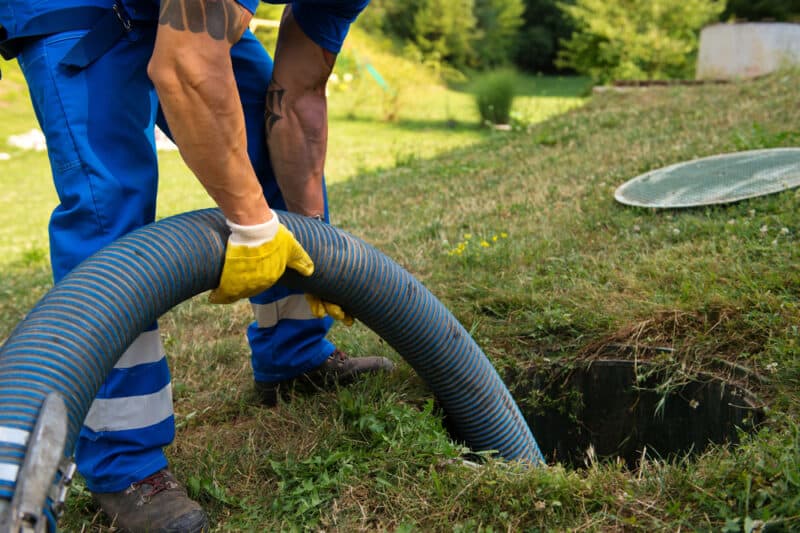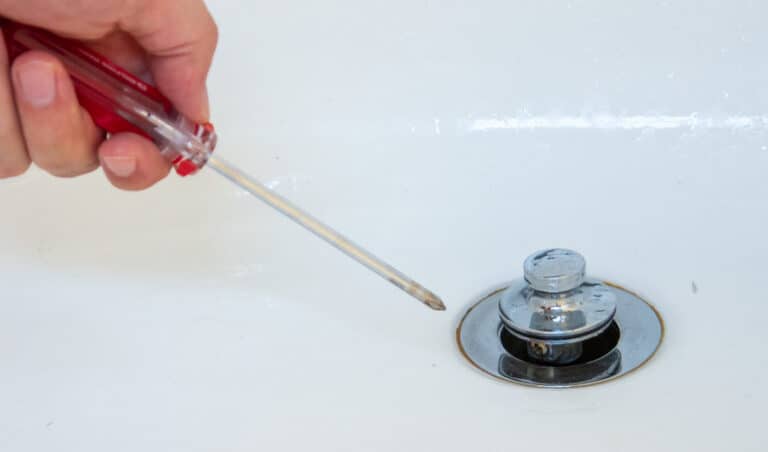How to Make a Homemade Septic Tank Treatment

Do you have a septic tank at home? A septic tank can be an effective and affordable way to remove waste from your home’s plumbing system. Septic tanks are especially useful in remote or rural areas where there may not be easy access to local sewage systems.
While a septic tank can be an effective waste disposal system, it also requires regular maintenance to keep working properly. Unlike a sewage system, septic tank maintenance is completely the responsibility of the homeowner. If you don’t maintain your tank, it won’t work properly, and that could result in foul odors or even drainage clogs in your home.
One of the most important forms of maintenance is a treatment that cleans the tank and promotes bacteria growth. There are treatments available in hardware stores and online. However, those treatments often include harmful artificial ingredients.
Instead, you may want to use a homemade treatment solution that can create bacteria growth but also protect the inside of your septic tank. Below is everything you need to know about how your septic tank works, and how you can use a homemade treatment to keep your tank working properly.
How does a septic tank work?
As the name suggests, a septic tank is an actual tank. It’s buried underground on your property. Your home’s drainage pipes run from your sinks, showers, toilets, and even garbage disposal to the main pipe outside your home. That main pipe is connected to the septic tank, which stores all of your solid and liquid waste.
The septic tank has another drainage pipe at the other end that is connected to something called the leech field. Inside the tank, the waste is converted into gas. That gas is released into the leech field via the drainage tank.
How does waste turn into gas? That happens through a long-term process inside the tank.
When waste enters the tank, it naturally sorts itself by weight. Heavier solids go to the bottom of the tank while lighter liquids stay at the top. Bacteria in the tank break down the waste into gas.
The liquid waste tends to break down quickly, which means you can pump liquid waste like water, drinks, and more into the tank on a more regular basis. As the liquid waste breaks down and exits the tank, the room opens up for new waste.
Solid waste takes much longer to break down and it uses more bacteria. As the solid waste breaks down into liquid and then gas, it rises to the top of the tank and eventually exits into the leech field. That creates more room for waste.
This constant process of breaking down waste and creating room for more waste is an essential part of the septic tank’s operation. If that process stops working, waste won’t leave the tank. That means your new waste will clog your drains. You’ll know this is happening because you will see the water start to pool in your drains. You may even start to smell the waste.
Watch this tutorial on making your own homemade septic system treatment
Septic Tank Treatments
How can you avoid backups and clogs? One great way is to regularly treat your septic tank. A septic tank treatment is a formula you flush down your toilets or even pour directly into the tank.
You can find septic tank treatments in most hardware stores or you can buy them online. However, many treatments in stores include artificial ingredients that can be aggressive. The chemicals can actually damage your tank and restrict natural bacteria growth in the future.
An alternative is to use a homemade treatment. You can make your own treatment with a wide variety of household ingredients. Below are a few different natural septic tank treatment recipes you can use to keep your tank running properly.
Baking Soda and Vinegar
An easy treatment recipe is baking soda and vinegar. Simply mix one part baking soda and an equal part vinegar. When you’re done, flush the mixture down the toilet. The baking soda will break down solid waste while the vinegar will kill old bacteria and foster new bacteria growth.
This is effective treatment because you can do it often. If you notice foul odors coming from the drains or toilets, simply make a mixture and flush it down the toilet. This is an easy and inexpensive formula, so you can use it whenever it’s needed.
Citrus Fruit Peels
Citrus fruits have enzymes that break down waste, prevent clogs, and foster bacteria growth. There are two ways you can put citrus fruit into your system.
One easy way is simply to peel the fruit directly into a toilet or drain. Flush the peels down the toilet and send them on their way to the tank. They’ll do their job naturally.
Another option is to boil the peels for use later. Then, whenever you feel that your tank needs treatment, you can simply take a peel out of your container and flush it. You can keep a supply of peels on hand whenever you need them.
Boiling Water
Do you notice water taking time to drain? Maybe there’s a gurgle or bubble of water before it escapes down the drain?
That can be a sign that your tank is nearly full and there’s not much room left for new waste. It could be that there is too much solid waste in the tank that hasn’t broken down yet.
You can speed up the process with a pot of boiling water. You simply boil a pot of water and pour it directly into the tank. Don’t flush it down the toilet. Open the tank lid and pour the water directly in there. That will accelerate the breakdown of solid waste in the tank and open up room for new waste.
Be advised though, that boiling water will also kill bacteria, including the helpful bacteria that is part of the waste breakdown process. This should only be used as a last resort and not on a regular basis.
Alum
Alum is a mineral that binds together particles and makes the heavier. This helps in a septic tank because it forces waste to settle at the bottom of the tank. That clears room at the top and accelerates the breakdown process.
Alum can be found online. While it’s not technically “homemade,” it is a natural element that does not include any harsh or aggressive chemicals. You simply buy some online and drop a piece into the tank on a regular basis. It should keep your tank clear and your drainage flowing freely.
Oxygen
Good old-fashioned oxygen is another great way to treat your pump and facilitate waste breakdown. Oxygen aerates the tank and helps bacteria spread throughout the waste. That accelerates breakdown.
You can aerate your tank with an air pump that you rent from an equipment supply business or a hardware store. Simply put the pump in the tank and turn on the oxygen. With just a few minutes of air, you can improve the flow of oxygen and foster waste breakdown. If you have your own air pump, this is a treatment you can do on a regular basis.
How often should you treat your tank?
There’s no right or wrong answer to how often you should treat your septic tank. It depends on multiple factors. One is the size of the tank. Smaller tanks will need treatment more frequently than larger tanks.
Another factor is the number of people in the house. More people means more waste. The more waste you have going into the tank, the more treatment you will need.
The amount of solid waste is another important thing to consider. Liquid waste tends to break down quickly. Solid waste can take much more time. If you have a garbage disposal that you use frequently, you are likely putting a significant amount of solid waste into the tank. It may be necessary to treat the tank often.
Over time, you will likely develop an instinct and a routine for treating the tank. Be on the lookout for signs that the tank needs help. Water that is slow to drain is a big sign. So too, are foul odors coming from drains and toilets.
You may want to write down how often you notice these signs. Then you can create a schedule to treat your tank before issues arise. A septic tank can be a great way to dispose of waste but it takes treatment and maintenance. Try these homemade solutions to keep your tank working properly.
You can also read:


